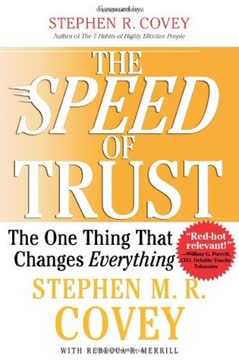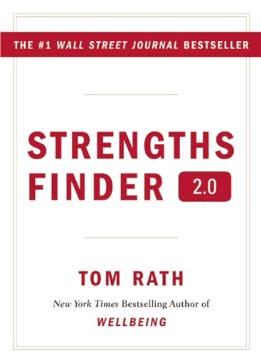Key Takeaways
1. Recognize the power of dialogue in crucial conversations
The single biggest problem in communication is the illusion that it has taken place.
Crucial conversations defined. A crucial conversation is a discussion between two or more people where the stakes are high, opinions vary, and emotions run strong. These conversations shape our lives, relationships, and careers. Common examples include discussing problems with a coworker, giving feedback to a boss, or addressing issues in a romantic relationship.
Impact of handling crucial conversations well:
- Improved relationships
- Enhanced career prospects
- Better organizational performance
- Increased personal health and well-being
Consequences of mishandling crucial conversations:
- Damaged relationships
- Stalled careers
- Organizational inefficiency
- Personal stress and health issues
2. Start with heart: Focus on what you really want
What do I really want for myself, for others, and for the relationship?
Clarify your objectives. Before entering a crucial conversation, take a moment to reflect on your true goals. This helps you avoid getting caught up in the heat of the moment and reacting emotionally. Instead of focusing on winning an argument or proving yourself right, consider what you genuinely want to achieve for yourself, others, and the relationship.
Avoid the "Fool's Choice":
- Don't fall into the trap of thinking you must choose between being honest and preserving the relationship
- Look for ways to achieve both candor and respect
- Challenge yourself to find creative solutions that address all parties' concerns
Stay focused on dialogue:
- Commit to seeking mutual understanding
- Be willing to listen and learn from others
- Remain open to changing your mind if presented with new information
3. Learn to look: Notice when safety is at risk
The moment a conversation turns crucial, the stakes grow higher and emotions run stronger.
Recognize crucial conversation cues. Pay attention to physical, emotional, and behavioral signs that indicate you're entering a crucial conversation. These may include a racing heart, sweaty palms, raised voices, or defensive body language. By identifying these cues early, you can take steps to address potential issues before they escalate.
Watch for silence or violence:
- Silence: Withdrawing, avoiding, or masking opinions
- Violence: Controlling, labeling, or attacking others
Monitor your own behavior:
- Be aware of your emotional state
- Notice when you're moving towards silence or violence
- Take a step back to regain composure if needed
4. Make it safe: Create an environment for open dialogue
When it's safe, you can say anything.
Establish mutual purpose and mutual respect. People feel safe in conversations when they believe that you care about their goals and respect them as individuals. When safety is at risk, step out of the content of the conversation and focus on creating a safe environment for dialogue.
Techniques for creating safety:
- Apologize when appropriate
- Contrast to clarify meaning and intent
- Create a mutual purpose
- Use CRIB: Commit, Recognize, Invent, Brainstorm
Address safety concerns promptly:
- Watch for signs that others feel unsafe
- Step out of the conversation to rebuild safety
- Return to the content only when safety is restored
5. Master your stories: Don't jump to conclusions
The first story we tell ourselves is rarely the most accurate or helpful.
Examine your assumptions. When faced with challenging situations, we often create stories to explain others' behavior. These stories can be inaccurate and lead to negative emotions and reactions. Learn to separate facts from interpretations and challenge your initial assumptions.
Types of unhelpful stories:
- Victim Stories: "It's not my fault"
- Villain Stories: "It's all their fault"
- Helpless Stories: "There's nothing I can do"
Steps to master your stories:
- Separate facts from interpretations
- Watch for "clever" stories that justify your behavior
- Tell the rest of the story by considering alternative explanations
- Ask yourself what you really want and how you can achieve it
6. STATE your path: Share your views persuasively
People who are skilled at dialogue do their best to make it safe for everyone to add their meaning to the shared pool.
Communicate your perspective effectively. When it's time to share your views, use the STATE skills to ensure your message is clear, respectful, and persuasive. This approach helps maintain safety while adding your meaning to the pool of shared understanding.
STATE skills:
- Share your facts
- Tell your story
- Ask for others' paths
- Talk tentatively
- Encourage testing
Guidelines for sharing:
- Start with the least controversial elements
- Explain your reasoning and intent
- Invite others to share their perspectives
- Be open to challenge and new information
7. Explore others' paths: Listen and learn from different perspectives
The best decision makers are those who actively seek out views that differ from their own.
Practice active listening. When others are sharing their views, use the AMPP skills to encourage open communication and gain a deeper understanding of their perspective. This approach helps build trust and creates opportunities for finding mutually beneficial solutions.
AMPP skills:
- Ask to get things rolling
- Mirror to confirm feelings
- Paraphrase to acknowledge the story
- Prime when you're getting nowhere
Strategies for effective exploration:
- Show genuine curiosity and interest
- Avoid interrupting or jumping to conclusions
- Seek to understand before seeking to be understood
- Look for areas of agreement and build on common ground
8. Move to action: Turn conversation into results
The goal of dialogue is not just to talk, but to turn crucial conversations into actions and results.
Transform dialogue into action. Once you've had a productive conversation, it's essential to translate the insights and agreements into concrete steps. This ensures that the dialogue leads to meaningful change and prevents misunderstandings about expectations and responsibilities.
Steps for moving to action:
- Decide how to decide (Command, Consult, Vote, or Consensus)
- Document decisions and assignments
- Follow up on commitments
Key elements of effective assignments:
- Who does what?
- By when?
- How will you follow up?
- What are the specific deliverables?
9. Stay focused and flexible: Adapt your approach as needed
The measure of a good crucial conversation is not how you handle it, but how you handle it when you're off your game.
Remain adaptable in challenging situations. Even with preparation and practice, crucial conversations can be unpredictable. Stay focused on your goals while remaining flexible in your approach. Be prepared to adjust your tactics as the conversation unfolds.
Strategies for staying on track:
- Regularly remind yourself of your true objectives
- Be willing to abandon ineffective approaches
- Practice the "two-minute rule": If you're not making progress after two minutes, try a different tactic
- Use the "time out" technique to regain composure if needed
Continuous improvement:
- Reflect on your conversations and identify areas for growth
- Seek feedback from trusted colleagues or friends
- Practice crucial conversation skills in low-stakes situations
- Celebrate successes and learn from setbacks
Last updated:
FAQ
What's Crucial Conversations about?
- High-Stakes Dialogue: Crucial Conversations by Kerry Patterson focuses on effective communication during high-stakes situations where opinions vary and emotions run strong.
- Tools for Communication: It provides practical tools and strategies to navigate difficult conversations, ensuring dialogue remains constructive.
- Building Safety and Trust: A central theme is creating a safe environment for dialogue, allowing participants to express views without fear of retribution.
Why should I read Crucial Conversations?
- Improve Communication Skills: The book enhances your ability to communicate effectively in high-pressure situations with actionable insights.
- Transform Relationships: Skills learned can transform personal and professional relationships by fostering open dialogue and understanding.
- Research-Based Strategies: The advice is based on extensive research and real-world applications, ensuring credibility and reliability.
What are the key takeaways of Crucial Conversations?
- Recognize Crucial Conversations: Understand what constitutes a crucial conversation and why it matters.
- Mastering Dialogue: Learn the importance of dialogue and how to create a safe environment for open communication.
- Tools for Success: The book outlines specific tools and techniques, such as the STATE method, to navigate difficult conversations successfully.
What is the STATE method in Crucial Conversations?
- Share Your Facts: Begin by stating the facts of the situation without embellishment to set a neutral tone.
- Tell Your Story: Explain your interpretation or feelings about the situation to help others understand your perspective.
- Ask for Others’ Paths: Invite the other person to share their views and feelings, fostering mutual understanding.
How do I make it safe to talk about almost anything according to Crucial Conversations?
- Step Out and Assess: When safety is at risk, step out momentarily to assess whether Mutual Purpose or Mutual Respect is at stake.
- Rebuild Safety: Use techniques like apologizing, contrasting, and creating a Mutual Purpose to restore safety.
- Focus on Mutual Goals: Ensure both parties understand and agree on the shared goals of the conversation.
What is the difference between Mutual Purpose and Mutual Respect in Crucial Conversations?
- Mutual Purpose: Refers to shared goals that ensure both parties feel their interests are considered and valued.
- Mutual Respect: Involves recognizing and valuing the other person’s dignity and worth, essential for effective dialogue.
- Importance of Both: Both conditions are crucial; if either is compromised, the conversation is likely to break down.
How can I handle my emotions during crucial conversations?
- Recognize Your Emotions: Acknowledge your feelings during the conversation as the first step in managing them.
- Retrace Your Path: Use the Path to Action model to analyze your feelings, thoughts, and behaviors.
- Choose Your Response: Instead of reacting impulsively, take a moment to choose how you want to respond.
What are some common forms of silence and violence in conversations according to Crucial Conversations?
- Silence: Includes behaviors like masking, avoiding, and withdrawing, which restrict the flow of meaning.
- Violence: Involves attempts to control or coerce others, such as labeling, attacking, and controlling.
- Impact on Dialogue: Both silence and violence kill dialogue and prevent meaningful conversations.
What are the three clever stories mentioned in Crucial Conversations?
- Victim Stories: Portray oneself as an innocent sufferer, ignoring personal responsibility.
- Villain Stories: Depict others as the source of the problem, attributing negative motives.
- Helpless Stories: Convince individuals they have no control, leading to inaction.
How can I effectively handle a conversation with someone who is defensive according to Crucial Conversations?
- Stay Calm and Composed: Maintain composure and avoid escalating the situation with aggressive language.
- Use the AMPP Skills: Apply Ask, Mirror, Paraphrase, and Prime techniques to encourage sharing perspectives.
- Focus on Mutual Purpose: Remind the other person of the shared goal to redirect focus from personal attacks.
How do I move to action after a crucial conversation according to Crucial Conversations?
- Decide How to Decide: Clarify how decisions will be made and who will be involved to prevent confusion.
- Make Assignments: Define responsibilities and set deadlines to ensure accountability.
- Document Agreements: Keep a record of discussions and agreements to hold everyone accountable.
What are some best quotes from Crucial Conversations and what do they mean?
- “The single biggest problem in communication is the illusion that it has taken place.”: Emphasizes ensuring communication is clear and understood by all.
- “Our lives begin to end the day we become silent about things that matter.”: Highlights the importance of speaking up during crucial conversations.
- “It’s not how you play the game, it’s how the game plays you.”: Reflects the idea that reactions and behaviors dictate conversation outcomes.
Review Summary
Crucial Conversations receives mixed reviews, with many praising its practical advice for handling difficult discussions. Readers appreciate the book's insights on managing emotions, creating safe environments for dialogue, and improving communication skills. Some find the concepts life-changing and applicable to both personal and professional situations. Critics argue the book is repetitive, oversimplified, and relies too heavily on common sense. While some consider it a must-read, others feel it lacks depth and fails to address power dynamics in real-world scenarios.
Similar Books









Download PDF
Download EPUB
.epub digital book format is ideal for reading ebooks on phones, tablets, and e-readers.






